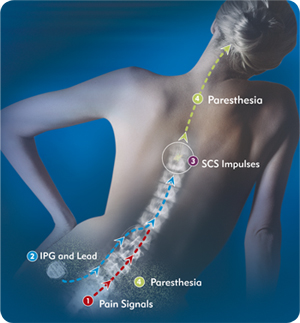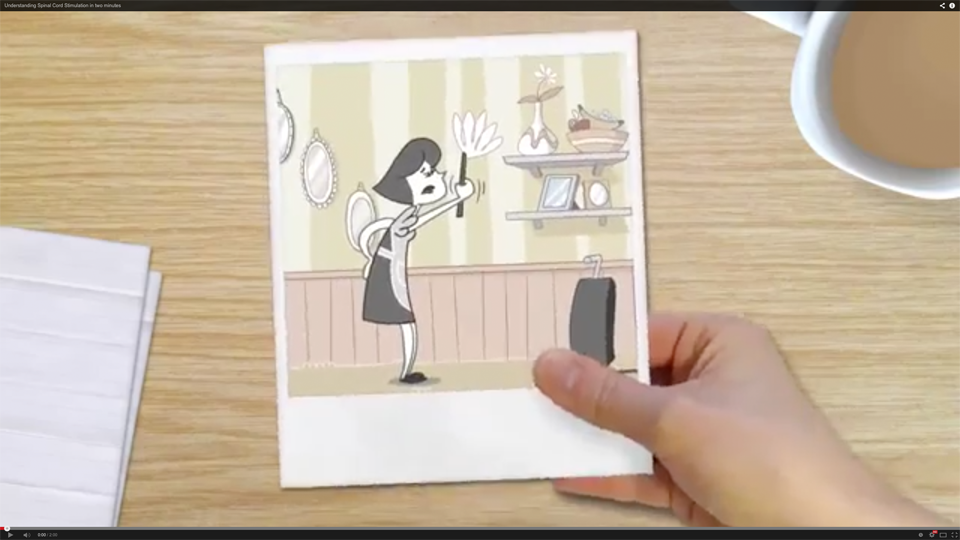Spinal Cord Stimulation
How does spinal cord stimulation work?

Clinical indications for SCS Therapy
Common clinical indications for SCS therapy include:
Failed Back (Surgery) Syndrome (FBSS):
An umbrella term that describes residual pain that persists despite multiple spine surgeries or other interventions - such as spinal manipulation or nerve blocks - to reduce back and leg pain or repair neurological deficits.
Complex Regional Pain Syndrome (CRPS):
A syndrome of various symptoms, most often caused by trauma, including burning pain, hyperaesthesia (increased sensitivity of any of the sense organs, especially the skin to cold, heat, pain, etc.), swelling, hyperhidrosis (excessive and profuse perspiration), and trophic changes in the skin and bone of the affected areas. Peripheral nerve stimulation may also be indicated for treatment.
Peripheral Neuropathy:
Any disease/disorder of the peripheral nerves.
Frequently Asked Questions
FAQ#1 - Can I "trial" SCS first?
Patients typically have the opportunity to trial the SCS system before having the surgical implant. Using a temporary, non-implanted (external) system for about one week, the patient has the opportunity to determine whether the SCS system fits their pain needs and lifestyle.
FAQ #2 – Is SCS reversible?
Even though your leads are surgically implanted, they can be disconnected or removed by your doctor, as needed.
FAQ #3 – Can medications work with SCS?
SCS can be used in conjunction with pharmaceuticals, if necessary. For some patients, SCS works well enough that pain medications are no longer needed. For others, it can mean a reduction in the amount of pain medication they need.
FAQ #4 – Will I be totally pain-free with SCS?
People differ in the amount of pain relief they receive with SCS therapy. Many people experience a reduction in pain sensations. The trial procedure will help you determine the amount of relief you may receive.
Resources

To learn more about chronic pain and your treatment options visit our painful truth website
Learn more











